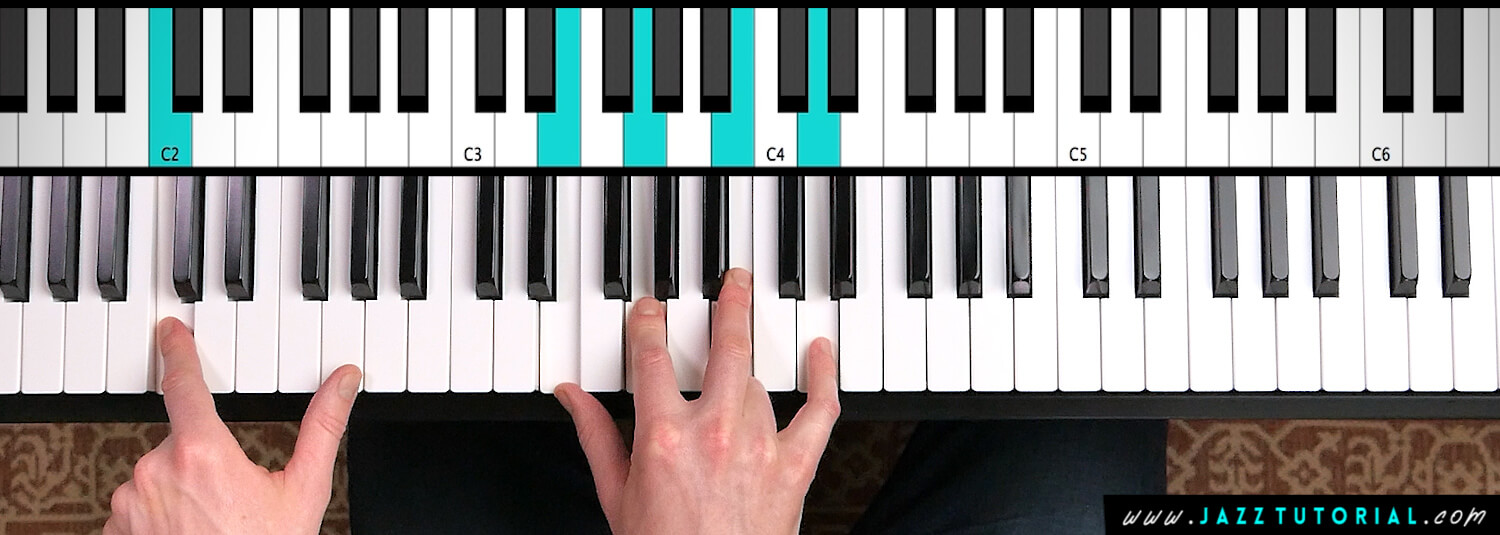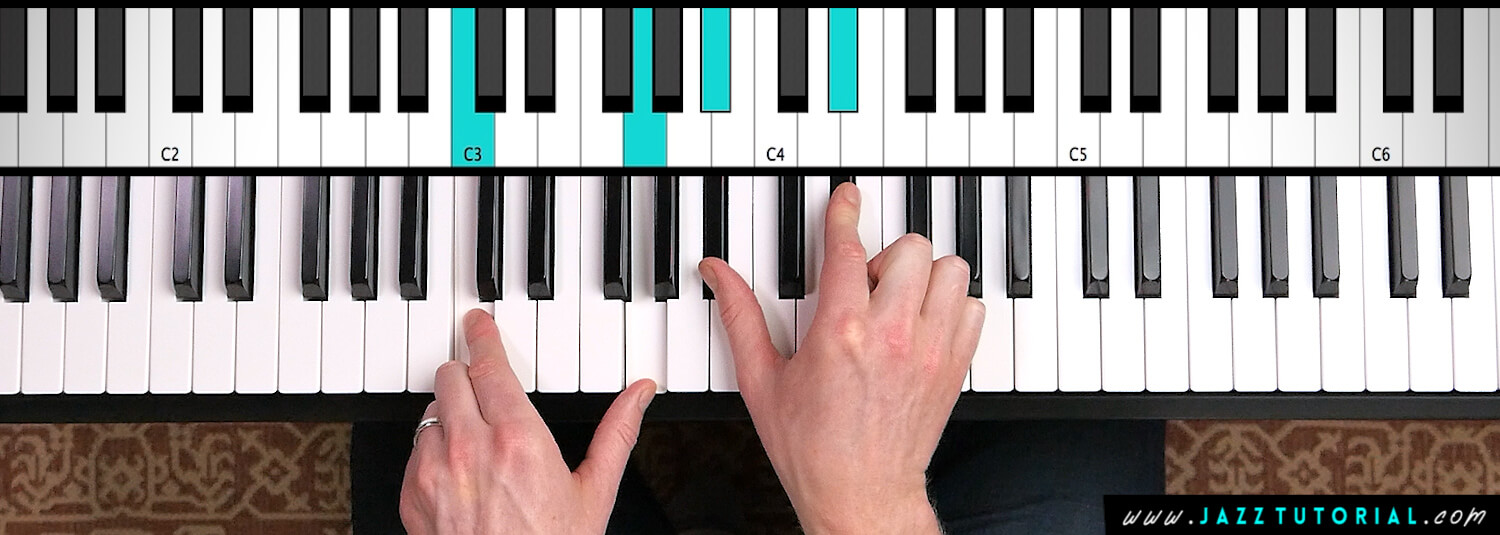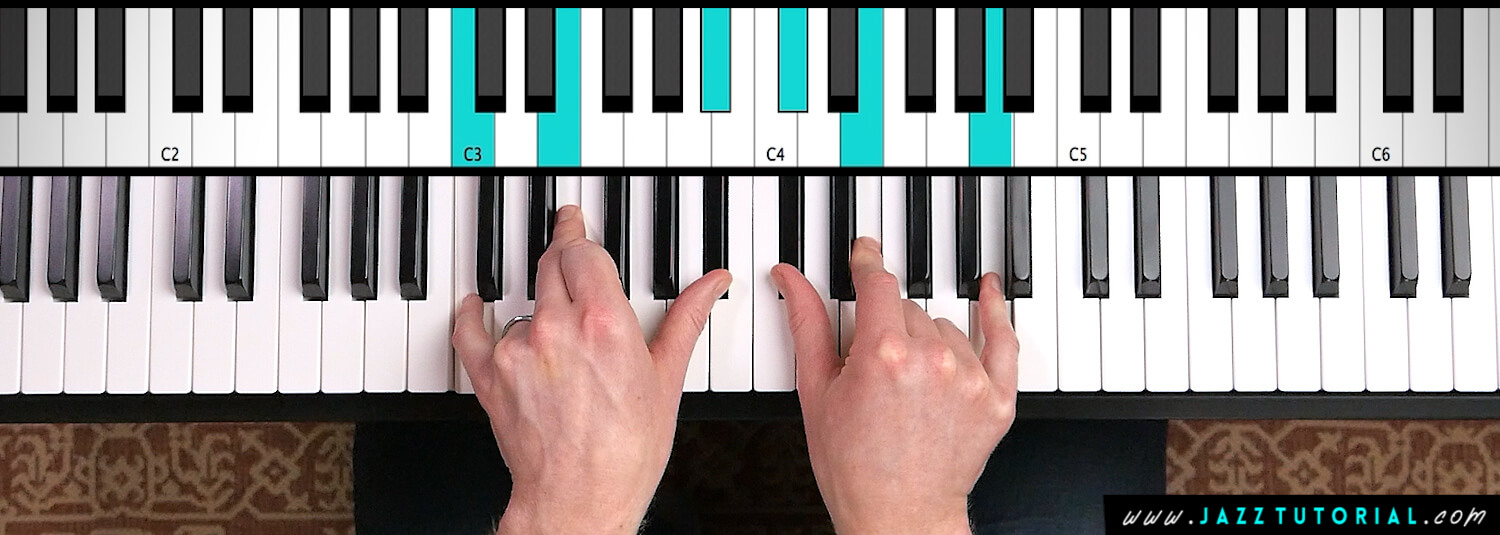How to Voice Jazz Standards on Piano
As a jazz pianist, a BIG part of the fun comes from choosing which chord voicings you'll use to ‘voice’ a jazz song.
Each chord can be played using many different chord voicings. Take a look at just a few voicings I could choose from for a C minor 7 chord:

So how do you decide which chord voicings to play?
As a beginner, I suggest you start by playing ‘closed voicings’ only (playing literally what the chord symbol says, 1 3 5 7). You can play any jazz song using just 1 3 5 7 and 5 7 1 3 of each chord (root position and 2nd inversion), while playing the melody line above in your right hand:

However, for more advanced players who have learned multiple types of chord voicing - I recommend using a technique I call ‘melody matching’. Here's how it works:
Look at what the melody note is in relation to the chord (e.g. 9th, 5th, 7th, etc), and then choose a chord voicing that already has that note as its top note.
That way, you can play the chords and melody together, just by playing carefully chosen chord voicings throughout the song:

NOTE: You only have to look at the first melody note played to choose your chord voicing. Most melodies will change notes later in the bar, but you can keep the same chord voicing in place. Sometimes you'll have to release some of the top notes from the chord voicing if the melody moves downwards into the chord and needs space.
Let's take some examples...
Say that the chord is C major 7 and the melody note is D - the 9th. Which chord voicing will you use?
Well in this case, you'd want a major 7 chord voicing that has the 9th as its top note - like this 'rootless voicing' (1 / 3 5 7 9) for example:

Or let's say the chord is C minor 7 and the melody note is Eb - the minor 3rd. Which chord voicing will you use?
Well in this case, you'd want a minor 7 chord voicing that has the 3rd as its top note - like this 'open voicing' (1 5 / 7 3) for example:

Or finally, let's say the chord is C7 (C dominant 7) and the melody note is A - the 13th. Which chord voicing will you use?
Well in this case, you'd want a V7 chord voicing that has the 13th as its top note - like this 'Upper Structure voicing' (an A major triad played over C7) for example:

And you would continue to work your way through the song, one chord at a time, choosing chord voicings which contain the melody note as their top note. This will need to be done slowly, and I suggest writing your chord voicings above the sheet music.
Free Sheet Music
Can I send you 39 pages of Jazz Piano sheet music?
-
Includes '29 Jazz Licks' (sheet music)
-
'The Chord Voicing Guide' (ebook)
-
'Sweet Chord Progressions and Riffs' (sheet music)
About the Author
Julian Bradley is a Jazz pianist and music educator from the U.K. He has a masters degree in music composition and loves helping musicians learn Jazz piano and reach their music goals. YouTube channel.
